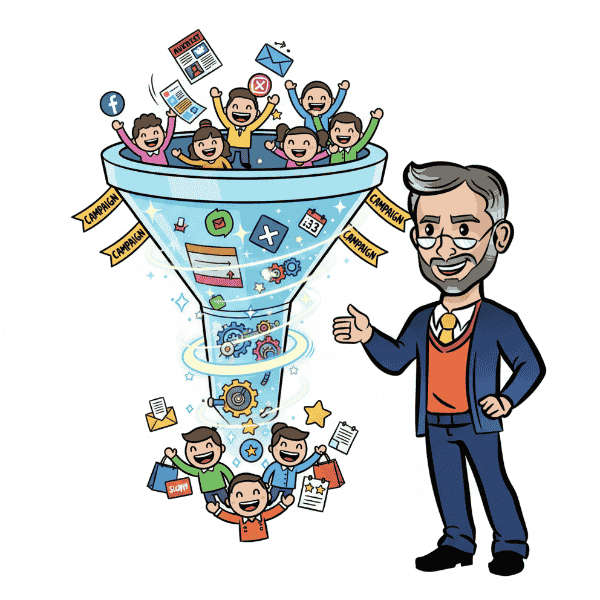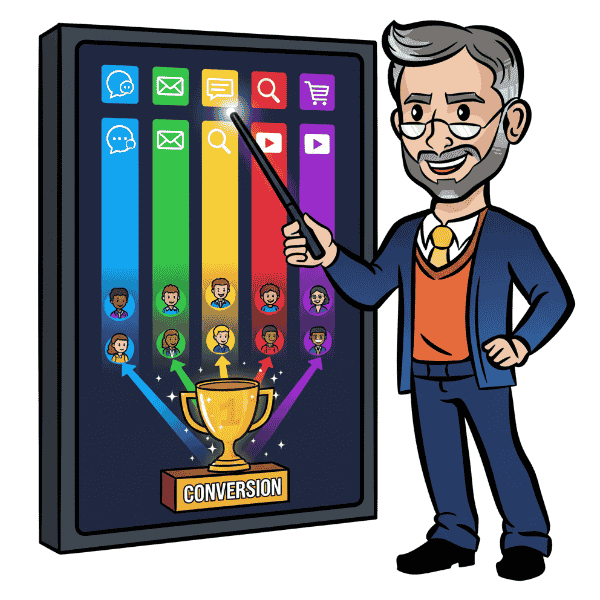Why Cost Per Acquisition (CPA) Matters
Definition: Cost per acquisition (CPA) is one of the most critical metrics for any business investing in paid advertising or performance marketing. It tells you exactly how much you’re spending to acquire each new customer, giving you clear insight into the efficiency and profitability of your marketing campaigns.
For startups, agencies, and e-commerce brands, understanding cost per acquisition (CPA) allows for smarter budget allocation, more accurate forecasting, and stronger ROI. Instead of focusing purely on traffic or clicks, CPA centers your strategy around actual customer conversions—helping ensure your marketing dollars drive real business outcomes.
Use It In A Sentence: We lowered our ad spend by improving the landing page, which helped bring down the cost per acquisition.
Benefits of Managing Cost Per Acquisition (CPA)

- Profit-Focused Marketing: By tracking cost per acquisition (CPA), you align marketing efforts directly with revenue goals, ensuring that customer growth is sustainable and profitable.
- Budget Optimization: CPA gives you a precise cost breakdown for every new customer, allowing you to adjust bids, pause underperforming ads, and double down on high-performing channels.
- Better Targeting Decisions: Monitoring CPA helps identify which audiences, creatives, and platforms deliver the best returns, improving your targeting over time.
- Scalability with Confidence: With a stable CPA, you can confidently scale ad spend, knowing that each dollar invested leads to predictable customer acquisition.
- Cross-Channel Performance Clarity: CPA enables you to compare different marketing channels—Google Ads, Facebook, affiliate programs—on equal footing, simplifying decision-making.
Key Elements of Cost Per Acquisition (CPA)
- Clear Conversion Goals: Define exactly what counts as an acquisition—purchase, subscription, lead form submission—so your CPA reflects meaningful results.
- Accurate Tracking & Attribution: Implement solid tracking systems (Google Analytics, CRM integrations) to ensure your CPA data is reliable and tied to actual customer actions.
- Audience Segmentation: Break down CPA by audience segments to understand which customer profiles deliver the highest value for the lowest cost.
- Channel Diversification: Test multiple acquisition channels to discover where your CPA is most efficient, balancing cost and volume for steady growth.
- Creative Testing: Continuously A/B test ad creatives, headlines, and offers to drive down CPA by improving engagement and conversion rates.
- Lifetime Value Alignment: Compare CPA against customer lifetime value (LTV) to ensure long-term profitability—not just cheap acquisition costs.
- Ongoing Optimization: CPA isn’t static. Use data reviews, campaign audits, and regular optimizations to lower acquisition costs while maintaining quality leads.
More Definitions
(From the Sales & Marketing Jargon Encyclopedia)
- Lifetime Value (LTV): is the total revenue a business can expect to earn from a single customer over the entire duration of their relationship.
Read More> - Link Juice: The SEO value or authority passed through hyperlinks to boost search rankings.
Read More> - One and Done: A sales or marketing approach that lacks follow-up or nurturing—often ineffective.
Read More>
Useful Posts
(From the Sales Funnel Professor Blog)
- Top of Funnel: Organic Social Strategies: Learn how to build brand awareness using unpaid social media content and outreach.
Read More> - SEO Top of Funnel Strategies: Dive into organic tactics that increase visibility at the awareness stage without a paid budget.
Read More> - How to Find Low-Hanging Fruit in Sales & Marketing: Discover practical ways to identify quick wins and easy-to-implement strategies that don’t require a big spend.
Read More>























